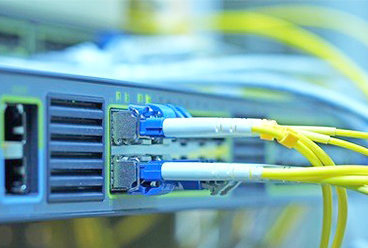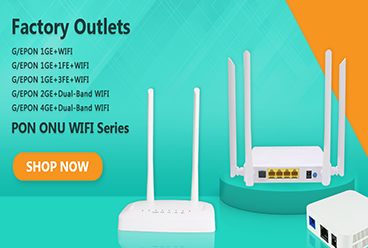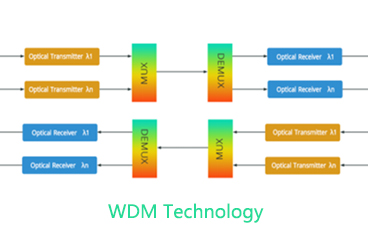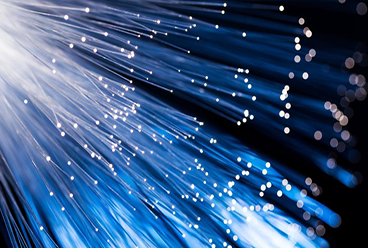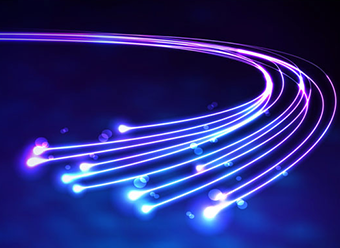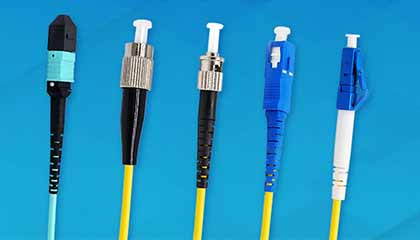Fiber optic cables and LAN (Local Area Network) cables are two different types of transmission media used for networking. Fiber optics are often chosen for high-performance, long-distance applications, while LAN cables are commonly used for shorter-distance connections in local networks.
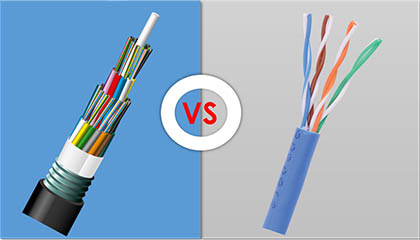
What is an Optical Fiber Cable?
An optical fiber cable, commonly known as a fiber optic cable, is a type of cable that contains one or more optical fibers—thin strands of glass or plastic that can transmit data in the form of light pulses. These cables are used for high-speed data transmission over long distances and are a key component in telecommunications networks, internet infrastructure, and various other applications.
Here are the main components and features of an optical fiber cable:
1. Optical Fibers
● Material: The fibers are typically made of glass or plastic. Glass fibers are more common in high-performance applications due to their lower signal loss.
● Core and Cladding: An optical fiber consists of a core (the inner part) and a cladding (the outer part). The core is where the light signals travel, and the cladding is designed to keep the light within the core by reflecting it. This structure enables the principle of total internal reflection for efficient signal transmission.
2. Buffer Coating
● Protective Layer: Each optical fiber is surrounded by a buffer coating, which serves as a protective layer. This coating helps prevent damage to the delicate fibers during handling, installation, and use.
3. Strength Members
● Reinforcement: Fiber optic cables often include strength members, such as aramid yarn or fiberglass, to provide tensile strength and protect the fibers from stretching or breaking.
4. Outer Jacket
● Protective Cover: The entire cable is encased in an outer jacket, which provides additional protection against environmental factors like moisture, chemicals, and physical damage.
5. Types of Fiber Optic Cables
● Single-Mode Fiber (SMF): Designed for long-distance transmissions, single-mode fibers allow only one mode (path) of light to propagate through the core. These are common in telecommunication networks.
● Multi-Mode Fiber (MMF): Suited for shorter-distance transmissions, multi-mode fibers allow multiple modes of light to propagate through the core simultaneously. They are often used in LANs and data centers.
6. Applications
● Telecommunications: Fiber optic cables form the backbone of modern telecommunications networks, facilitating high-speed data transmission for telephone, internet, and television services.
● Data Centers: Fiber optics are used to connect servers, storage, and networking equipment within data centers, enabling high-bandwidth and low-latency communication.
● Internet Backbone: The global internet infrastructure relies heavily on fiber optic cables for intercontinental and transoceanic data transmission.
7. Advantages
● High Bandwidth: Fiber optic cables offer high bandwidth, enabling the transmission of large amounts of data at high speeds.
● Low Signal Loss: Optical fibers experience minimal signal loss over long distances, allowing for efficient data transmission.
● Immunity to Electromagnetic Interference: Unlike copper cables, fiber optics are not susceptible to electromagnetic interference.
What is an LAN Cable?
A LAN cable, or Local Area Network cable, is a type of cable commonly used to connect devices within a local network. LAN cables are a fundamental component of wired networking and are widely used in homes, offices, and various other environments where devices need to communicate over a short distance.
Here are the key features and components of a LAN cable:
1. Conductor Material
● LAN cables typically use copper conductors for data transmission. Copper provides good conductivity and is cost-effective.
2. Twisted Pair Configuration
● Most LAN cables consist of twisted pairs of copper wires. The twisting helps to reduce electromagnetic interference (EMI) and crosstalk between adjacent pairs.
3. Categories of LAN Cables
● LAN cables are categorized based on their performance characteristics. Common categories include Cat5e (Category 5e), Cat6 (Category 6), Cat6a (Category 6a), and Cat7 (Category 7). Each category has specific specifications for data transmission speed and bandwidth.
4. RJ-45 Connectors
● LAN cables terminate with RJ-45 connectors at each end. These connectors have eight pins and are designed to be compatible with Ethernet ports on computers, routers, switches, and other network devices.
5. Applications
● LAN cables are used to establish wired connections between devices in a local network. Common applications include connecting computers, printers, routers, switches, and other networking equipment within homes, offices, and data centers.
6. Data Transmission Speed
● The data transmission speed of a LAN cable depends on its category. For example, Cat5e cables can support speeds up to 1 gigabit per second (Gbps), while Cat6 and Cat6a cables can support higher speeds, such as 10 Gbps.
7. Distance Limitations
● LAN cables are generally designed for relatively short-distance communication within a local area network. The effective distance can vary based on the cable category and the desired data transmission speed.
8. Flexibility and Jacketing
● LAN cables come in various designs to suit different installation needs. They may have different levels of flexibility, and the outer jacket of the cable provides protection against environmental factors.
9. Power Over Ethernet (PoE)
● Some LAN cables, especially those of higher categories like Cat6 and Cat6a, support Power over Ethernet (PoE). PoE allows electrical power to be transmitted along with data over the same cable, which is useful for powering devices like IP cameras and VoIP phones.
The difference between fiber optic cable and LAN cable
The choice between fiber optic cables and LAN cables depends on factors like transmission speed, distance, susceptibility to interference, and the specific requirements of the networking application.
Here are the key differences between fiber optic cables and LAN cables:
1. Transmission Medium
● Fiber Optic Cable: Utilizes optical fibers made of glass or plastic for transmitting data. Light signals are used to carry information through the cable.
● LAN Cable (typically Copper): Uses metallic conductors, commonly copper, to transmit electrical signals.
2. Transmission Speed
● Fiber Optic Cable: Offers higher transmission speeds, typically in the range of gigabits per second (Gbps) to terabits per second (Tbps).
● LAN Cable: Supports lower transmission speeds compared to fiber optic cables, usually ranging from megabits per second (Mbps) to gigabits per second (Gbps).
3. Transmission Distance
● Fiber Optic Cable: Provides longer transmission distances without significant signal loss, often spanning tens or hundreds of kilometers.
● LAN Cable: Generally has shorter transmission distances, typically in the range of tens to hundreds of meters.
4. Resistance to Interference
● Fiber Optic Cable: Highly resistant to electromagnetic interference and radio-frequency interference. It is not affected by electrical noise.
● LAN Cable: Susceptible to electromagnetic interference and may experience signal degradation in the presence of external interference.
5. Physical Characteristics
● Fiber Optic Cable: Lighter, thinner, and more flexible compared to LAN cables. It is also immune to issues like crosstalk.
● LAN Cable: Heavier, thicker, and less flexible than fiber optic cables. It may be more prone to issues like crosstalk, especially in densely cabled environments.
6. Security
● Fiber Optic Cable: Offers higher security as it is more difficult to tap into or intercept signals due to the use of light for data transmission.
● LAN Cable: Potentially more susceptible to eavesdropping or signal interception since signals are transmitted as electrical pulses.
7. Use Cases
● Fiber Optic Cable: Commonly used for long-distance, high-speed data transmission in backbone networks, data centers, and telecommunications infrastructure.
● LAN Cable: Typically used for connecting devices within a local area network, such as computers, printers, and routers in homes, offices, or small businesses.
Tags : fiber optic cable, LAN cable
— END —




